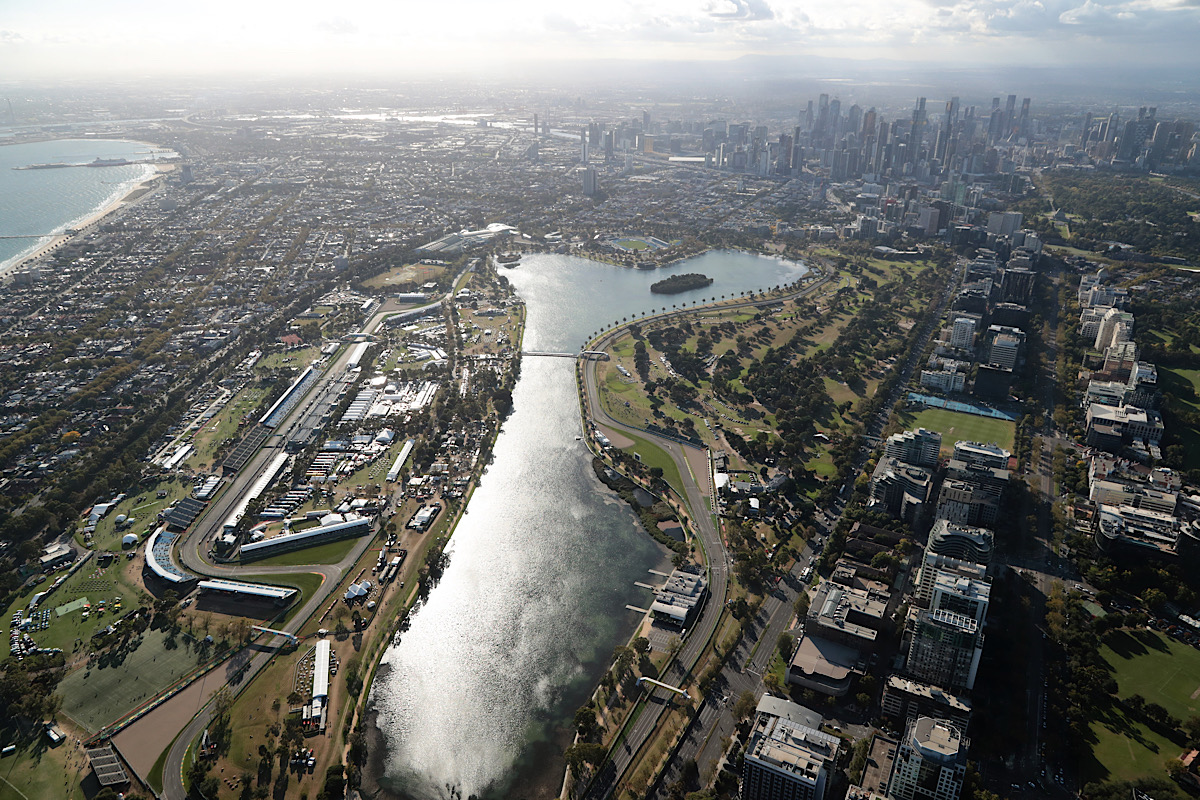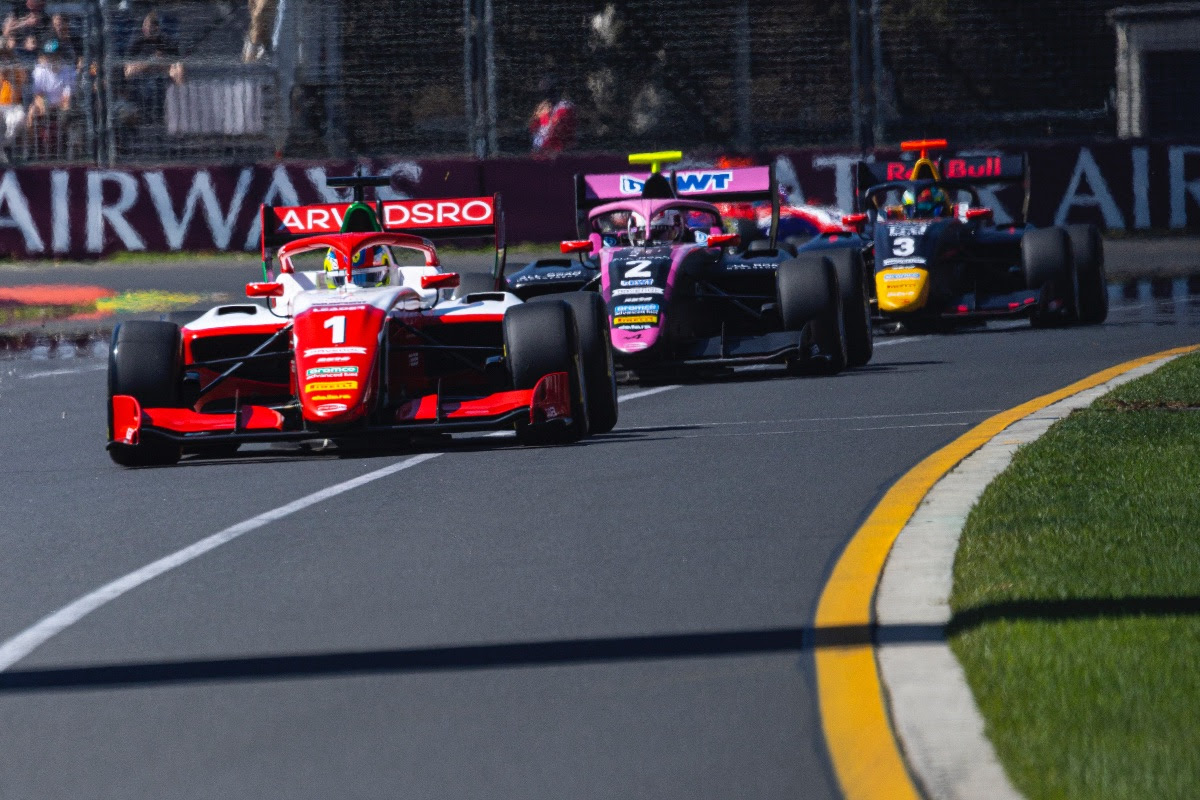
Photo: Formula 1
F2 and F3’s Melbourne trip has featured drama aplenty on qualifying day. What can be expected in the races?
After a successful first visit to Australia in 2023, Formula 2 and the FIA Formula 3 Championship headed there again this weekend to support Formula 1. On Friday there were plenty of crashes and surprises as practice and qualifying took place, and there’s plenty of anticipation for drama-filled races this weekend. But what are the drivers expecting on a ‘street’ track with plenty of grass and gravel-filled run-off, being hit by plenty of sun, and with rubber being laid down by three high-powered single-seater series and Australia’s Supercars and Porsche Carrera Cup championships?
“It’s not easiest to pass around here, but everything is happening all the time around here for some reason,” summarised MP Motorsport’s Dennis Hauger, who topped F2 qualifying to take feature race pole and put himself 10th on the sprint race grid.
“I think we have some [sprint race] opportunities, and then for the feature race everything can happen, we’ve just got to try to keep it clean and have a good start. Obviously we have the pace this weekend, so we just have to try and keep it clean…”
Formula Scout probed F2’s top three qualifiers on how the track had evolved so far, with Hauger having only gone 0.96 seconds faster than in practice – when he also topped the times – and with the next best drivers Andrea Kimi Antonelli and Richard Verschoor improving by 1.089s and 1.16s respectively.
It is always expected of drivers in F1’s support series to go faster in qualifying than practice, not only down to the drivers finding more pace in themselves after limited practice time but because they use a softer and therefore grippier tyre compound in qualifying, other series have laid down rubber – which can lead to a stickier track surface and improved mechanical grip – between their sessions on track and cars will be set up specifically for one-lap pace.
But the amount of drivers ending their practice or qualifying by sliding off the track, and the size of the pace gains, suggested that the Melbourne track wasn’t providing the level of grip that may have been anticipated for qualifying.

Side-by-side action for F2 in Melbourne last year
And how the track evolves for the races will also be key since the amount of rubber being baked into the track means there will be a big grip differential on and off the racing line and that could dictate how much side-by-side battling is possible.
“So from practice, the grip changed quite a lot. I think also because we had a way softer compound. In practice we were with mediums, while in quali we were with supersofts. And also with the F1 [practice sessions], the track got more grip,” said Antonelli, the first to answer Formula Scout’s question.
“I think the track improved, but not so much because also the Tarmac was quite a bit harder compared to practice. So in some way, I feel like also the tyres were overheating a bit easier compared to practice, just because the asphalt was a bit hotter. But I think the grip is going to improve, especially with tomorrow’s qualifying for F1 [after F2’s sprint race].
“Eventually also the track is going to get a bit more dirty on the outside line, because of the other categories. So I think tomorrow for the sprint race, the grip is going to be quite high, while for the feature race it might be a bit more difficult to go side-by-side due to the dirt outside the track. But I think the grip is going to be really good in the next few days.”
Hauger said that “going from free practice, I thought it would be more of a delta” with his qualifying pace.
“It was only a second from FP to quali for us. In Jeddah it was 1.6s or something from FP to qualifying. So I thought it would be a bit more, especially after F1 had done FP1 and FP2. But the grip, it’s not too bad because cars were driving here on Thursday as well. So probably it will be a bit better grip throughout the weekend as F1 gets going.
“But I think we’re already at some sort of level that was similar to last year, and the gap was not crazy. I think the medium [compound] is quite good in terms of speed as well.”
Verschoor was in agreement, adding: “One thing that I think all of us struggled a bit more with was going out on the cold tyres. It seemed to be quite difficult to get them up to temperature. So tomorrow, maybe during safety cars, if we have some, or the start of the race, it might be a bit more difficult to get the tyres heated. But after one or two laps it should be all fine.”

Photo: Prema
The F3 drivers, who total 30 compared to F2’s grid of 22, are expecting they will have action-filled races regardless of how the track develops.
“We can definitely attack [in our sprint race]. There are four DRS straights here, so there are plenty of opportunities to race and to overtake. So this is really good,” said Prema’s Dino Beganovic, who qualified third.
“That’s why I like this circuit quite a lot, for the racing part. And also we have a good race car, so I look forward for it.”
Trident’s Sami Meguetounif said to Formula Scout that for F3 “the main change is that we have a different compound compared to last year” with a switch from from the hard to the medium tyre. The 2024-specification medium is also quite different to its 2023 predecessor.
The compound switch also left ART Grand Prix’s Laurens van Hoepen pondering over his race predictions, and he pointed out how the shortened singular practice session was key to getting “a better picture of how the race weekend will be”. However he did commit to saying “I think really there’s going to be a lot of action, a lot of safety cars as well”.
Although MP’s Alex Dunne also pointed out the number of DRS zones meant “there’s probably more opportunity for overtaking, possibly, than what we had in Bahrain”, he said “realistically” that “quali will be quite a big thing as always” for dictating who fills the top places in the races.